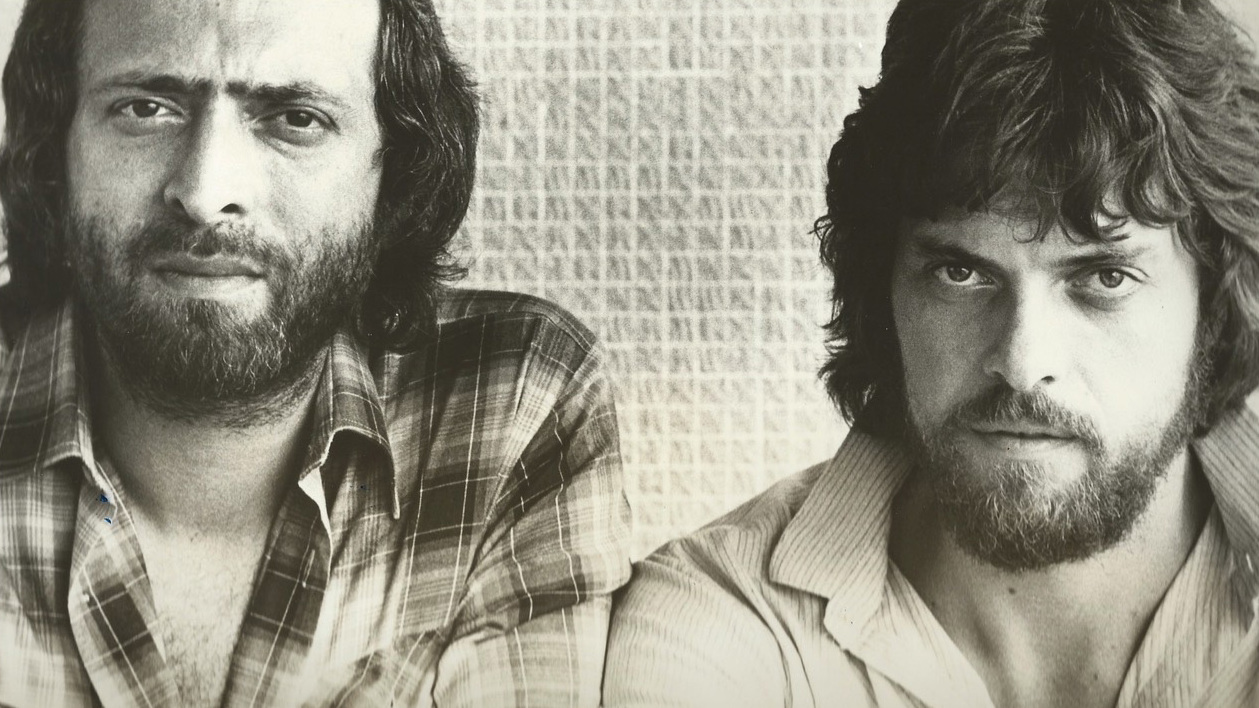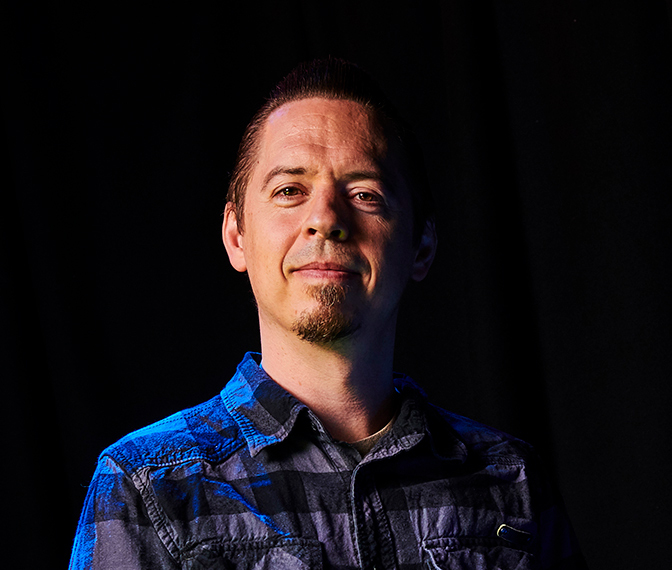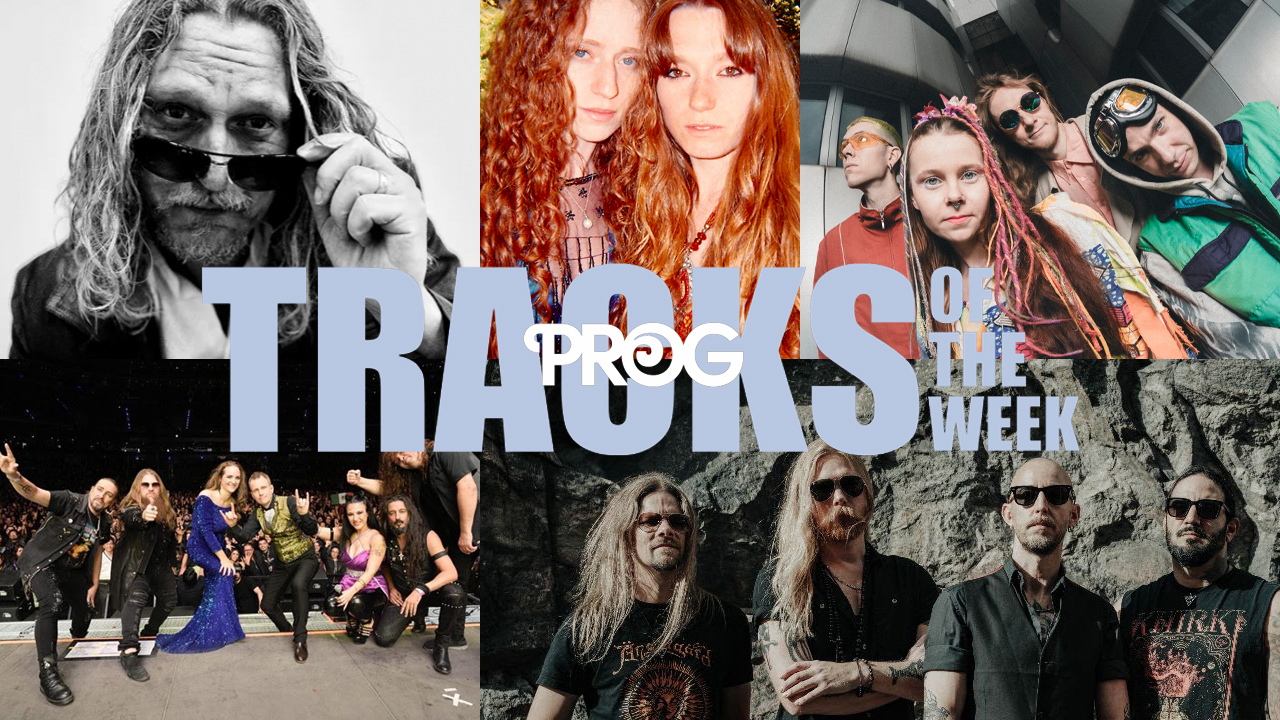“Nobody was more surprised than I was when we started doing it, and today it’s my main activity”: Perfect but unplanned timing sent the Alan Parsons Project touring galaxies far, far away with I Robot
When their second album arrived alongside Star Wars in 1977, the dream-come-true coincidence changed their career path

After exploring the gothic menace of Edgar Allan Poe on Tales Of Mystery And Imagination, The Alan Parsons Project looked to the future for their second album. Coinciding with the late-1970s science fiction boom, I Robot gave producer and engineer extraordinaire Alan Parsons a showcase for his studio mastery. He told Prog the story in 2013.
Immortalised by Homer Simpson as ‘some sort of hovercraft’, The Alan Parsons Project created classic prog albums even while defying the conventions of what constituted a band in the first place. As an in-house engineer at Abbey Road Studios, Parsons’ place in prog history was assured when he worked on Pink Floyd’s The Dark Side Of The Moon. With credits that included The Beatles’ Abbey Road, Parsons was right at the forefront of what could be accomplished in the recording studio; and his expertise was much in demand in the 70s when he worked with Paul McCartney, The Hollies and Cockney Rebel, to name just three.
Not content with just being an engineer and producer, Parsons teamed up with songwriter Eric Woolfson to form the Project and provide a platform for their musical ideas. Joined by a host of guest musicians, the duo released their debut album, Tales Of Mystery And Imagination, in 1976, inspired by the writings of Edgar Allan Poe. It impressed Clive Davis sufficiently to sign them to Arista Records for their follow up, I Robot, which took its name and concept from the science fiction writings of Isaac Asimov.
“I wasn’t familiar with his work – it was really Eric that instigated the thing,” says Parsons about the inspiration behind the album. “I certainly was a science fiction fan – I used to read short stories quite a bit; although I wasn’t really much of a reader; never was, probably never will be. I read I, Robot cover to cover once the idea came up and I thought it was great.
”I think it’s fairly well documented that we don’t follow his philosophy at all, or the story. We had opposing ideas about the relationships that man and machine would have. But it was a good link to have because a lot of people knew of Asimov’s work long before our album came out.”
Parsons’ name may have fronted the group, but at the time his role was very much focused on the technical side of the music. “Clive Davis signed us without really knowing anything about the way we worked or who contributed what,” he says. “It was always my role to put my engineering hat on and try to make best use of what the studio could contribute to a recording or to a composition.
“There's no question that some of the time the production itself would shape the composition, and that’s why I felt justified in sharing the composing credits with Eric because we very much worked together towards the end result. Sometimes he would literally come up with a complete song but I would change it in certain ways and make it slightly different and therefore I had my stamp on it.”
Sign up below to get the latest from Prog, plus exclusive special offers, direct to your inbox!
The core of the group that played on I Robot came from Scottish rock band Pilot, for whom Parsons had produced the hit single Magic – Stuart Tosh on drums, David Paton on bass and guitarist Ian Bairnson. Joining them was a stream of a different lead singers – eight in total – that included Allan Clarke from The Hollies and Steve Harley from Cockney Rebel; Parsons having worked on Make Me Smile (Come Up And See Me). “I think Cockney Rebel were actually quite progressive. Because of their appearance they were possibly considered to be rather glam rock and glam pop – but I think their music was really quite prog,” says Parsons.
For an album hailed as a prog classic, I Robot features remarkably few musicians with previous experience in the genre, particularly on the vocal front. For example, Lenny Zakatek came from the pop group Gonzalez, who scored a disco hit with I Haven’t Stopped Dancing Yet – as far from prog as can be. “I think people liked to do guest appearances,” says Parsons. “I don’t think Allan Clarke had ever been asked to guest on anybody’s album before, nor had Steve Harley as I recall.
”I think the choices we made were a little on the unexpected side. Allan Clarke from The Hollies – wow, that’s a strange choice! We felt there was a strength there. Dave Townsend, who sang Don’t Let It Show, was not known as a singer, but was very well known as a writer because he wrote Miss You Nights, a hugely respected ballad that Cliff Richard had a hit with.
We didn’t do stuff to make it deliberately complicated – it was well laid-out so, had I got run over by a bus, somebody else could have picked it up
“The other thing was purely practical. I’d worked with Allan for years with The Hollies. All I had to do was pick up the phone and say, ‘Hey, can you come and listen to a song and see if you’d like to sing it?’ Nearly everybody we worked with right through to the last album tended to be people we knew or people whose managers we knew. Rather than desperately trying to find somebody that we thought would fit the bill we tried to think of people that we knew or that we’d worked with before in some capacity.”
One unique challenge from this way of working was that the songs were invariably written before Parsons and Woolfson knew who would end up singing them. In the case of Some Other Time, when they couldn’t find one singer who fit the tune, they ended up with two – Peter Straker, best known for being the star of the musical Hair, and Jaki Whitren, who took the first crack at the track.
“I got her in to sing the song and I thought she totally nailed the choruses but I didn’t get the right effect on the verses,” says Parsons. “Then Peter Straker came in and had a go at it. What was interesting was that the voices were actually very similar. Most people haven’t realised the song is sung by two people – one voice on the verses, one voice on the choruses.”
For an album as densely arranged and meticulously produced as I Robot, one of Parsons’ constant battles was against the limits of the studio technology, at a time when state-of-the-art was 24-track analogue tape. “It was always a challenge to make tracks available. You would either mix seven or eight things down to a pair of tracks so you had six more tracks available or you would copy from one 24-track tape to another, condensing all the tracks down to a lesser number so we could add stuff. We quite often added stuff just wild on the mix, particularly effects, and stuff like that would be done at the mixing stage. It was a challenge.
“It was even worse, of course, on 16-track – and remember that Dark Side Of The Moon was 16-track. You were always fighting to find a way to squeeze things on. You would sometimes have to mix a backing vocal track with a sax track just to squeeze it on there.
”That’s the producer/engineer’s job, to know where everything is and how it fits and how to make the mixing process as simple as possible. We didn’t do stuff just to make it deliberately complicated – it was hopefully well laid-out so, had I got run over by a bus, somebody else could have picked it up and made reasonable sense of it.”
I remember one of the principal A&R guys at Arista saying, ‘This isn’t just a record; this is an event’… It was the age when the concept album was fashionable
Fortunately, no buses interfered with the finishing of the album, which was released in the summer of 1977 – as science fiction was just about to take over the world in the form of Star Wars. “That was just a dream come true; it really was. We were out promoting I Robot and the buzz was starting at exactly the same time – people queuing up all night to go and see this mysterious movie. We all went to see it in Chicago while we were on a promotional trip. I loved it. To this day it’s in my top three movies.”
He describes the reaction to the album as “fantastic,” adding: “I remember one of the principal A&R guys at Arista saying, ‘This isn’t just a record; this is an event.’ Fantastic initial reaction. It was the age when the concept album was fashionable and hip. If I decided to put out a concept album now they’d go, ‘Oh no, Alan Parsons, another concept album, oh dear.’ But that’s the way it was. It was good timing and everybody liked the basic conceptual idea.”
Well, almost everyone. “We barely got a single play on Radio 1. If anything we’d get on Bob Harris late at night, or Alan Freeman. Alan was very good to us; he was well known for being out of the ordinary and supporting real rock music as opposed to Top 10 pop.”
The lack of radio didn’t stop the album reaching Number 30 in the UK chart, while it broke into the Top 10 on The Billboard 200. The music industry was a very different place in 1977: the money was in album sales and big bands put on spectacular tours that bled cash but more than recuperated their losses in record sales. However, the Project weren’t about to venture outside of the comfort of their studio home.
“We made it very clear in interviews at the time, ‘Oh no, we couldn’t possibly do this live; we’re a studio band’ – that was the feeling,” says Parsons. “‘This music is simply too complex, particularly because of the orchestration, to ever play live.’ Nobody was more surprised than I was when eventually we started doing it, and today it’s my main activity.
“The other thing was that I was not a performer on the albums, except for the occasional backing vocal part or rhythm guitar part. We’d muse over what I would do in any live band anyway. Get on the stage and warm up the audience?”
I Robot still holds a special place in his affections. “I remember when Allan Clarke went into the studio and sang for the first time, I went, ‘Oh my God, he’s nailing it!’ And on Genesis Ch.1 V. 32 I was very touched when Clive Davis said to me, ‘This is a great piece of music – congratulations!’”
After starting his writing career covering the unforgiving world of MMA, David moved into music journalism at Rhythm magazine, interviewing legends of the drum kit including Ginger Baker and Neil Peart. A regular contributor to Prog, he’s written for Metal Hammer, The Blues, Country Music Magazine and more. The author of Chasing Dragons: An Introduction To The Martial Arts Film, David shares his thoughts on kung fu movies in essays and videos for 88 Films, Arrow Films, and Eureka Entertainment. He firmly believes Steely Dan’s Reelin’ In The Years is the tuniest tune ever tuned.





